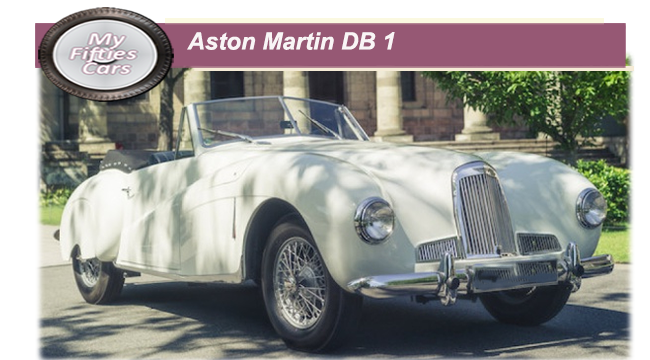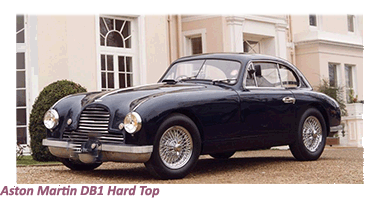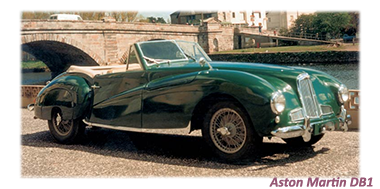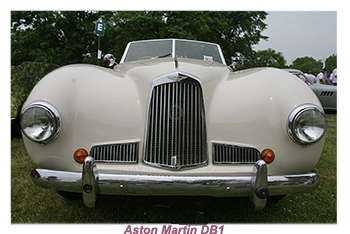
 Very much an interim model, the Two-Litre Sports was launched in 1948, not long after tractor magnate David Brown had acquired Aston Martin for the bargain price of twenty thousand pounds.
Very much an interim model, the Two-Litre Sports was launched in 1948, not long after tractor magnate David Brown had acquired Aston Martin for the bargain price of twenty thousand pounds.
Brown, an astute businessman with refined design and engineering skills, obviously saw the potential in Aston Marin that other didn't, with the company producing very few vehicles based on pre-Second World War designs.
 To be fair to the existing design team at Aston Martin, they did have an interesting prototype in the works; a modern-looking fixed had coupe known as the "Atom."
To be fair to the existing design team at Aston Martin, they did have an interesting prototype in the works; a modern-looking fixed had coupe known as the "Atom."
David Brown, very much a hands-on owner, decided that a convertible or drophead coupe version of the Atom would be a good launch point for his first design, to be launched as the Aston Martin DB1.
 Brown called on the services of talented design engineer Claude Hill to tighten the chassis on the DBI. Hill had already updated a pre-war pushrod Overhead Valve 2-litre engine on behalf of the previous owner. The engine was to be used only on the DB1.
Brown called on the services of talented design engineer Claude Hill to tighten the chassis on the DBI. Hill had already updated a pre-war pushrod Overhead Valve 2-litre engine on behalf of the previous owner. The engine was to be used only on the DB1.
![]()
Hill made extensive use of lateral supports, required to be tall enough to support the top of the DB's body, specially designed by another UK talent of the period, Frank Feeley.
Feeley, who was on the design team at Lagonda that Brown had also recently acquired, was given the design brief to shake off the pre-war look.
 Aston Martin utilised the new multi-tube frame and high-output four-cylinder engine designed by Claude Hill, a talented engineer. Hill had been commissioned to revamp the engine design before Brown took over.
Aston Martin utilised the new multi-tube frame and high-output four-cylinder engine designed by Claude Hill, a talented engineer. Hill had been commissioned to revamp the engine design before Brown took over.
 Brown never intended that the DB1 would go into any form of scheduled production, as it was hand-built at almost every stage and was very far from being cost-effective.
Brown never intended that the DB1 would go into any form of scheduled production, as it was hand-built at almost every stage and was very far from being cost-effective.
 This feature, along with the DB1's coil spring front suspension, and rear axle located by coil springs and radius arms, was the signature for a whole new type of Aston Martin.
This feature, along with the DB1's coil spring front suspension, and rear axle located by coil springs and radius arms, was the signature for a whole new type of Aston Martin.
![]()
Despite the design updates, the DB1's design was reasonably typical of open-topped touring cars available immediately after the end of World War Two, with a bulky, four-seater drophead coupe body style, with the car's spare wheel mounted in a pocket in the front wing.
 Although the car was far from being a commercial success, Brown was not unpleased while the design and development team at Aston Martin learned a lot from the DB1.
Although the car was far from being a commercial success, Brown was not unpleased while the design and development team at Aston Martin learned a lot from the DB1.
Particular engineering elements of the chassis frame and the styling theme of the nose would be seen again on the car's successor, the DB2.
 In motoring history, it is now widely recognised that Aston Martin used the DB1 2-liter Sports as a testbed for so many of the models that followed it.
In motoring history, it is now widely recognised that Aston Martin used the DB1 2-liter Sports as a testbed for so many of the models that followed it.
Just 14 DB1s were produced, eventually causing the model to become a real rarity and a desirable collector's item as a result.


